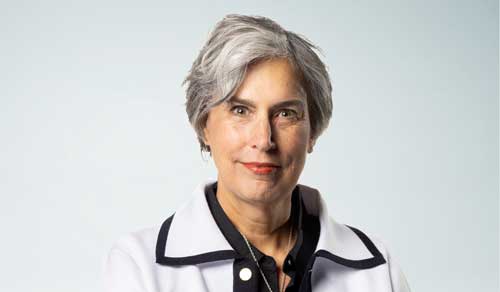The practice of underwriting has often been described as both a science and an art – and for good reason.
Young professionals begin their careers by developing a scientific foundation in risk scoring through training and study. Yet while trained to develop an eye for detail and to identify patterns, junior life insurance underwriters can struggle to confidently assess more complex or ambiguous pieces of evidence and often must pass such cases to more seasoned professionals. Only through experience can these underwriters develop the more intuitive, “artistic” ability to assess risk like their senior colleagues.
The best underwriters learn to balance the art and the science of underwriting through a mix of mentoring, training, and practical experience. With a looming shortage of skilled underwriters, it is urgent that insurers acknowledge the psychological roots of different decisioning styles and create career development programs that help underwriters arrive at better – and faster – results.
On Science and Art
Life underwriters learn two complementary decisioning styles when assessing risk: a more formal style gained through training, and a more ingrained set of skills developed through practical experience.
A junior underwriter endeavors in the first few years to learn the basics of life insurance underwriting: knowledge of insurance products and contracts, influence of health indicators on mortality, use of an underwriting manual, fundamental understanding of financial statements, and ability to factor geopolitical and macroeconomic inputs into decisioning. To hone these skills, the budding professional undergoes thorough training, earns designations, attends seminars, and consults with senior colleagues. Despite this training, encountering the right level of ambiguity and complexity often triggers a need to pass a case to a more experienced underwriter for assessment.
Why? Because there is also an art to good decision-making. More seasoned underwriters benefit from a more finely honed sense of how to fill in missing pieces to develop a holistic picture of an applicant’s risk. The best underwriters demonstrate critical thinking, an eye for detail, and the ability to connect disparate pieces of information. Even with limited information, they can not only make better decisions, but also more effectively defend the basis for those decisions.
See also: Art or Science? Cultivating the Next Generation of Underwriting Talent Holds the Key
Behavioral Science and Underwriting
It is important for insurers to understand the roots of different risk assessment and decisioning styles in behavioral science and psychology. Much can be learned from the groundbreaking research in behavioral science of economist and Nobel laureate Daniel Kahneman, who argued for two systems or styles of decision-making. The first, an automatic or intuitive approach that comprises 98% of all our thinking, enables an individual to assess limited information and make seemingly effortless decisions by drawing on past experiences and critical thinking skills. The second approach, making up the remaining 2% of our thoughts, is more deliberative, more fact-dependent, literal, and laborious.
Junior underwriters often rely heavily on more formal underwriting processes, leaning on fact-gathering and classification to make decisions. Even the most disciplined of these underwriters can struggle to intuit relationships or associations between ideas that are not explicit or seem contradictory, and can swiftly become paralyzed when not provided with certain facts.
Experienced underwriters meanwhile can think more creatively to make faster decisions even amid some uncertainty and ambiguity. In other words, they can more readily access 98% of their decision-making potential. Understanding the psychology behind these styles is essential to design career development opportunities that help underwriting professionals make the transition from science to art more rapidly.
See also: Behavioral Science and Insurance: Part One
On Art and Automation
Technology continues to rapidly remake the profession of underwriting. We are far from the automated rules engines of yesteryear. Sophisticated predictive models and new forms of artificial intelligence are emerging that can perform many repetitive risk scoring activities for simple cases with minimal human support. On the other hand, no machine yet has been able to replicate the art of underwriting – the ability to make unexpected associations or apply creative thinking to a case.
Advances in technology promise to shift the workload of simple cases with structured information from the junior underwriter to technology-enabled applications. In this scenario, the junior and intermediate underwriters will be asked to quickly mature their decisioning skills to focus on more complex cases with more limited information. An essential element in this transformation is to develop a more artistic and intuitive decisioning style.
See also: Underwriting 2.0. - In an increasingly automated world, what does risk assessment look like?
Training Talent
A central challenge remains: Unlike beginners’ training of underwriting risks and manual ratings, the skills of keen observation, practical curiosity, and creative association cannot be taught in a classroom. However, working under the mentorship of a senior underwriter can help. Mentors can model certain skills and techniques and help unlock the ability to identify complex patterns. Multiple training cycles dealing with complex cases can also help develop the artist in every underwriter.
These training and career development practices should follow a competency-based model. The first step is to identify the competency of every underwriter at three levels: personal, technical, and professional. Based on this, an individualized approach can be developed in collaboration with managers. In Competency-based Training Basics, authors Rothwell and Graber discuss the 70-20-10 rule, which states that 70% of training happens on the job, 20% through networking, and only 10% through formal training. On-the-job mentorship is pivotal to this process.
Importantly, underwriting expertise is based more on critical thinking skills than it is the accumulation of years. In practice, some individuals are exceptionally talented and progress very quickly, while others may take longer.
Another important note: Underwriters in a race to develop a more holistic, associative, and experience-based mode of risk assessment could rely on heuristics and biases during the multi-year training period. Vigilance is necessary to address this very real pitfall, particularly when underwriters are asked to assess unusual cases and exception requests. Any successful training program will coach participants to make conscious effort to determine, identify, and address those biases. After all, adopting the art of underwriting does not mean abandoning the science. At every point in life or a career, a balance of the two systems of human decisioning makes progress possible.
The next article in the series will explore the concepts of heuristics and bias and how they can impact underwriting decision-making. It will outline strategies to neutralize bias in the underwriting process through a conscious effort of managing individual blind spots.




